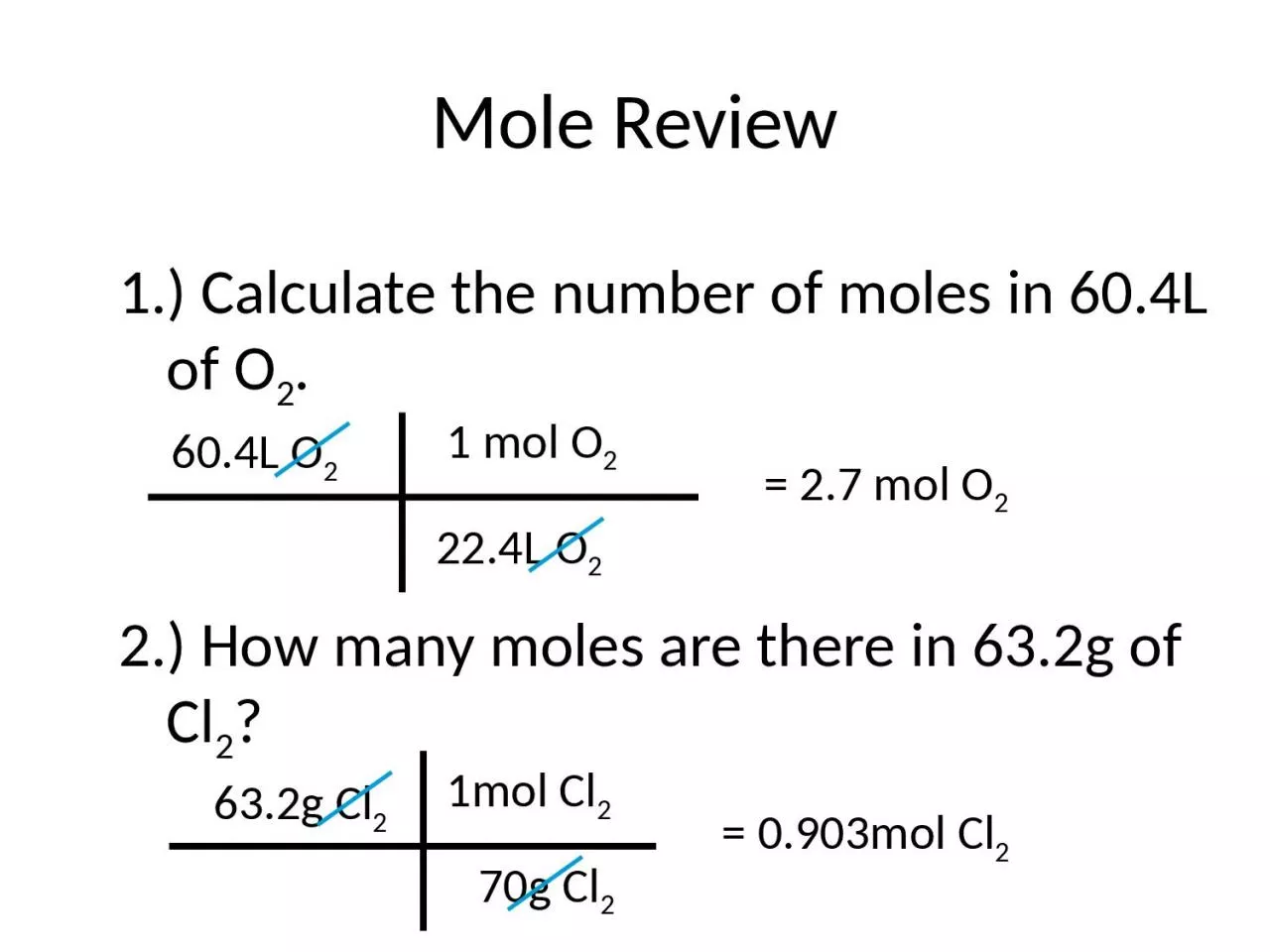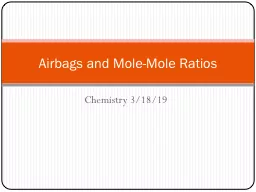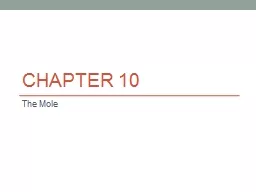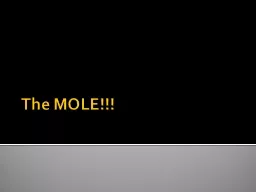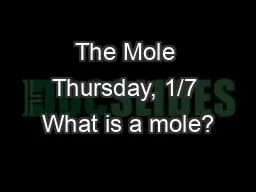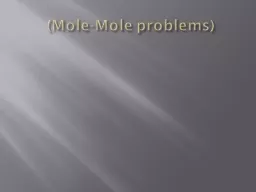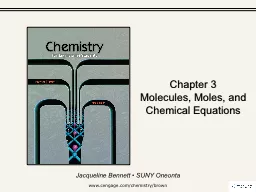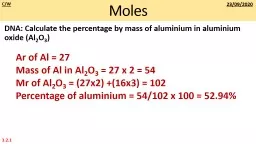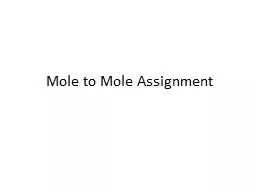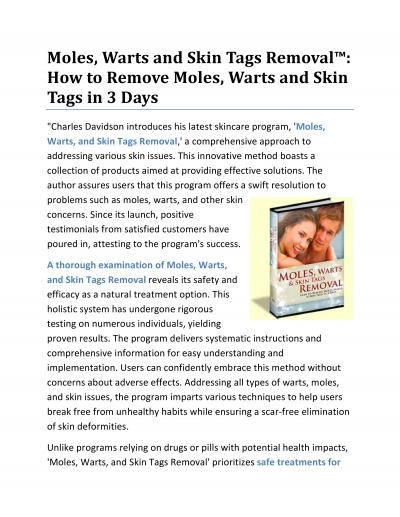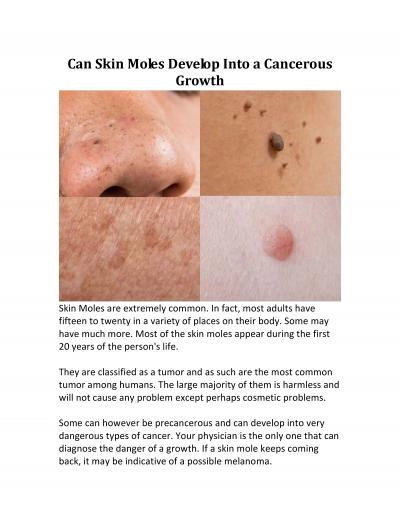PPT-Mole Review 1.) Calculate the number of moles in 60.4L of O
Author : Soulreaver | Published Date : 2022-07-28
2 2 How many moles are there in 632g of Cl 2 604L O 2 224L O 2 1 mol O 2 27 mol O 2 632g Cl 2 70g Cl 2 1mol Cl 2 0903mol Cl 2 Ch 9 Math In Chemistry
Presentation Embed Code
Download Presentation
Download Presentation The PPT/PDF document "Mole Review 1.) Calculate the number of ..." is the property of its rightful owner. Permission is granted to download and print the materials on this website for personal, non-commercial use only, and to display it on your personal computer provided you do not modify the materials and that you retain all copyright notices contained in the materials. By downloading content from our website, you accept the terms of this agreement.
Mole Review 1.) Calculate the number of moles in 60.4L of O: Transcript
Download Rules Of Document
"Mole Review 1.) Calculate the number of moles in 60.4L of O"The content belongs to its owner. You may download and print it for personal use, without modification, and keep all copyright notices. By downloading, you agree to these terms.
Related Documents

